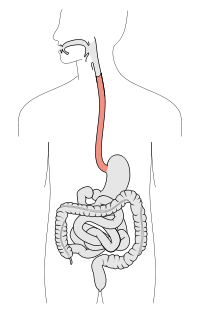
Photo from wikipedia
Universally accepted guidelines for diagnosis and management of any disease are desirable. Standardization of thyroid cytology reporting is aimed at guiding and improving clinical decision-making and management. However, socio-economic, and… Click to show full abstract
Universally accepted guidelines for diagnosis and management of any disease are desirable. Standardization of thyroid cytology reporting is aimed at guiding and improving clinical decision-making and management. However, socio-economic, and local factors and differences in disease prevalence and patterns require modification to suit local settings. 'One size fit all' approach is not possible for any disease diagnosis or management. The same concept is applicable in diagnosis and management of thyroid nodules. An additional special issue is the well-known high inter and intra-observer variability in the histological and cytological diagnosis of thyroid neoplasms. Despite this, thyroid cytology has a very significant influence in the management of thyroid diseases. An approach based on common principals with appropriate modifications that suits countries or continents is desirable and sustainable. The principals of TBSRTC have served as a framework for similar tiered classifications for reporting thyroid cytopathology. This article discusses globally available professional guidelines based on a common framework with appropriate modifications, with the universal aim of risk stratification of thyroid nodules.
Journal Title: Gland surgery
Year Published: 2020
Link to full text (if available)
Share on Social Media: Sign Up to like & get
recommendations!